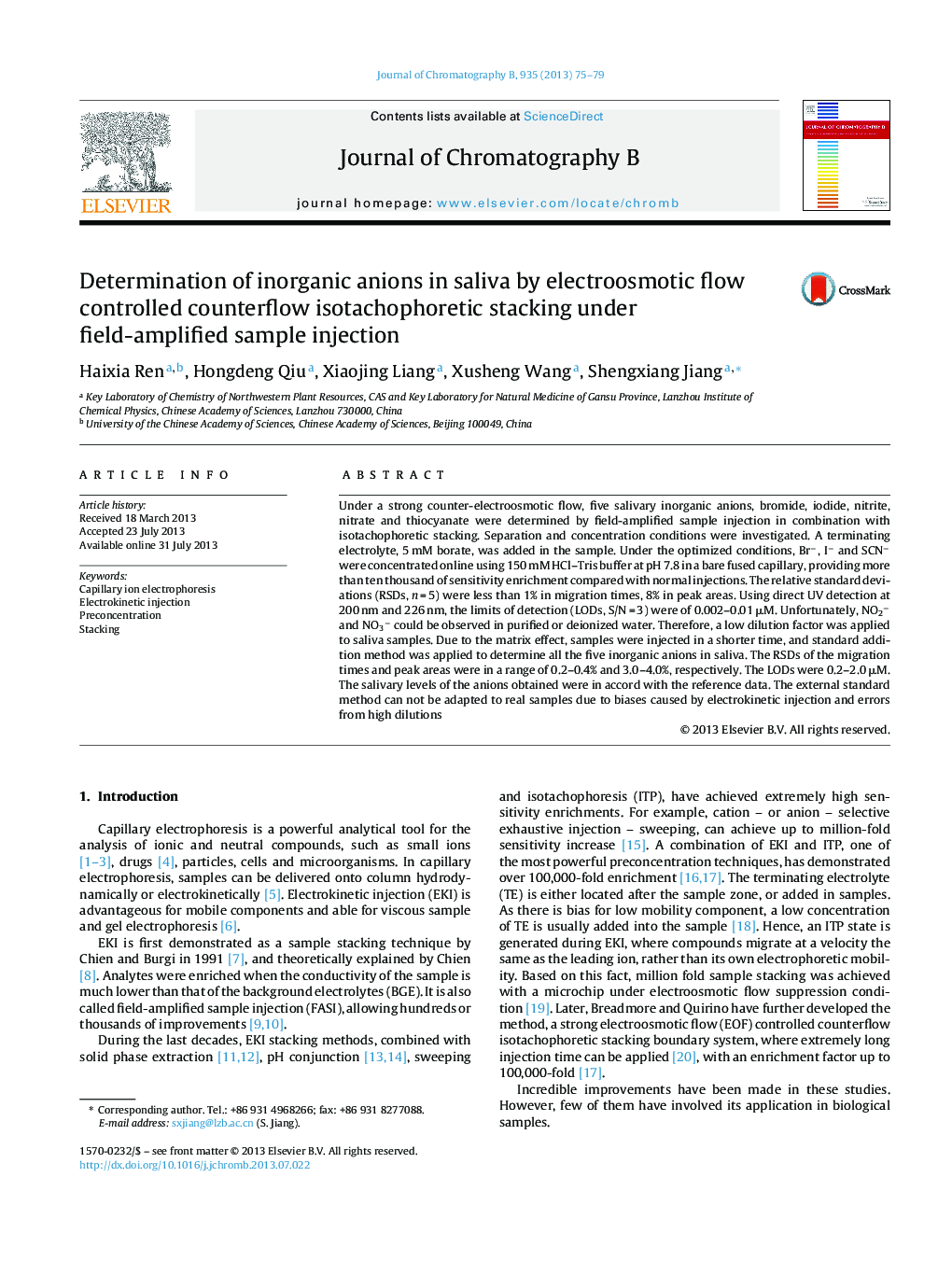| Article ID | Journal | Published Year | Pages | File Type |
|---|---|---|---|---|
| 7618177 | Journal of Chromatography B | 2013 | 5 Pages |
Abstract
Under a strong counter-electroosmotic flow, five salivary inorganic anions, bromide, iodide, nitrite, nitrate and thiocyanate were determined by field-amplified sample injection in combination with isotachophoretic stacking. Separation and concentration conditions were investigated. A terminating electrolyte, 5 mM borate, was added in the sample. Under the optimized conditions, Brâ, Iâ and SCNâ were concentrated online using 150 mM HCl-Tris buffer at pH 7.8 in a bare fused capillary, providing more than ten thousand of sensitivity enrichment compared with normal injections. The relative standard deviations (RSDs, n = 5) were less than 1% in migration times, 8% in peak areas. Using direct UV detection at 200 nm and 226 nm, the limits of detection (LODs, S/N = 3) were of 0.002-0.01 μM. Unfortunately, NO2â and NO3â could be observed in purified or deionized water. Therefore, a low dilution factor was applied to saliva samples. Due to the matrix effect, samples were injected in a shorter time, and standard addition method was applied to determine all the five inorganic anions in saliva. The RSDs of the migration times and peak areas were in a range of 0.2-0.4% and 3.0-4.0%, respectively. The LODs were 0.2-2.0 μM. The salivary levels of the anions obtained were in accord with the reference data. The external standard method can not be adapted to real samples due to biases caused by electrokinetic injection and errors from high dilutions
Related Topics
Physical Sciences and Engineering
Chemistry
Analytical Chemistry
Authors
Haixia Ren, Hongdeng Qiu, Xiaojing Liang, Xusheng Wang, Shengxiang Jiang,
